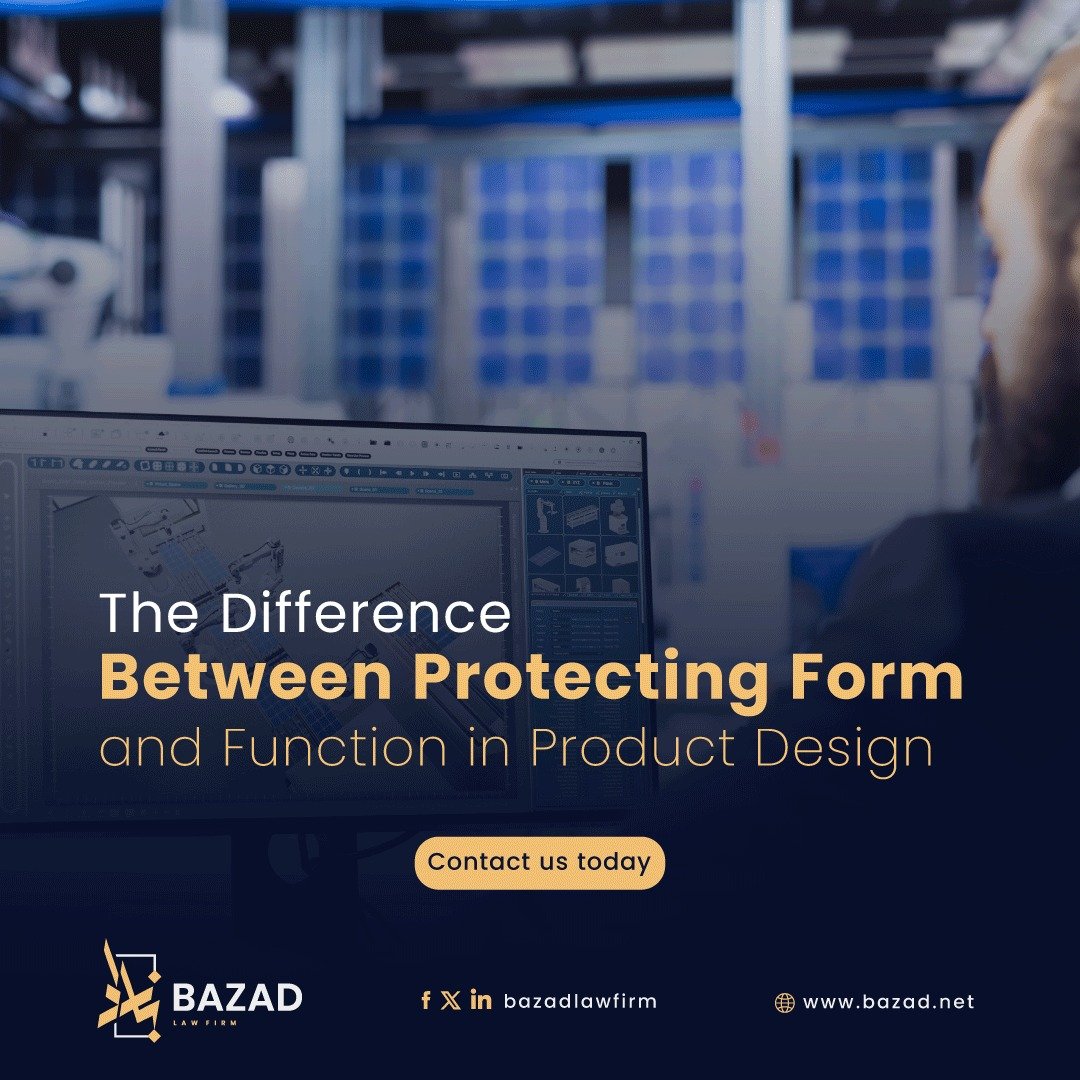
The Difference Between Protecting Form and Function in Product Design
When a company or producer decides to develop a new product—whether it’s a water bottle or an electronic device—it should not only consider the function of the product but also its final visual appearance as perceived by consumers.
This raises an essential legal question:
What exactly can be legally protected—and how?
Can the form of a product be protected? What about its mechanism of action? And is there an overlap between the two?
Let us explore these critical distinctions in detail:
1. Protection of Form – Industrial Design
What is Industrial Design Protection?
Industrial design refers to the protection of a product’s visual or aesthetic features—such as the outer shape, curves, patterns, colors, and general composition.
This form of protection does not cover how the product works or operates, but rather its external appearance only. Legal protection can be secured by registering the industrial design with the relevant authority:
- In Egypt: General Department of Industrial Designs and Models under the Ministry of Trade and Industry.
- In Saudi Arabia: Saudi Authority for Intellectual Property (SAIP).
Duration: Typically 10–15 years (renewable depending on jurisdiction).
Examples include:
- The contoured Coca-Cola bottle
- The design of Apple AirPods
- Packaging of a cream jar or a medical device
2. Protection of Function – Patent
What is Functional Protection?
Functional protection relates to the method, mechanism, or technical solution behind how a product operates or achieves a particular outcome. It covers technical, engineering, or software aspects of the invention.
How is this protected legally?
Through filing a patent application, which must meet strict legal criteria including:
- Novelty
- Inventiveness (non-obviousness)
- Industrial applicability
Duration: Generally 20 years from the date of filing.
Examples include:
- A bottle cap’s opening/closing mechanism
- Foldable smartphone screen technology
- An intelligent algorithm for power-saving in a device
Form vs. Function: Key Differences
| Element | Design Protection (Form) | Patent Protection (Function) |
|---|---|---|
| What is protected? | Aesthetic appearance | Mechanism or method of operation |
| Type of protection | Industrial Design | Patent |
| Innovation required? | Unique visual design | Novelty + Inventiveness + Applicability |
| Term | Typically 10–15 years | Up to 20 years |
| Examples | Packaging shape, device exterior | Cooling system, operation logic, smart algorithms |
Can You Protect Both Form and Function?
Yes—and this is often the optimal legal strategy.
For example, a company may choose to:
- Protect the exterior as an industrial design
- Protect the functional mechanism via a patent
This dual protection strengthens your legal position and helps prevent imitation on both the aesthetic and technical levels.
BAZAD’s Legal Services in This Area
At BAZAD, we provide integrated IP support for product-based companies, innovators, and startups, including:
- Assessing whether your product qualifies for form, function, or dual protection
- Filing industrial designs locally and internationally
- Drafting and prosecuting technical patents
- Managing design and patent portfolios for startup founders
- Legal strategies to prevent counterfeiting and design infringement
Are You Developing a New Product?
Book your free 30-minute consultation now to explore whether your product can be protected by design, patent—or both.






